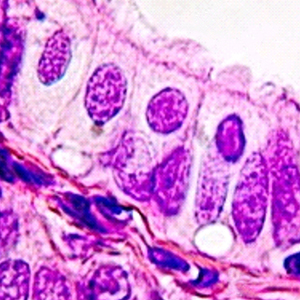Molecules involved in the sperm interaction in the human uterine tube: a histochemical and immunohistochemical approach

All claims expressed in this article are solely those of the authors and do not necessarily represent those of their affiliated organizations, or those of the publisher, the editors and the reviewers. Any product that may be evaluated in this article or claim that may be made by its manufacturer is not guaranteed or endorsed by the publisher.
Accepted: 27 February 2023
Authors
In humans, even where millions of spermatozoa are deposited upon ejaculation in the vagina, only a few thousand enter the uterine tube (UT). Sperm transiently adhere to the epithelial cells lining the isthmus reservoir, and this interaction is essential in coordinating the availability of functional spermatozoa for fertilization. The binding of spermatozoa to the UT epithelium (mucosa) occurs due to interactions between cell-adhesion molecules on the cell surfaces of both the sperm and the epithelial cell. However, in humans, there is little information about the molecules involved. The aim of this study was to perform a histological characterization of the UT focused on determining the tissue distribution and deposition of some molecules associated with cell adhesion (F-spondin, galectin-9, osteopontin, integrin αV/β3) and UT’s contractile activity (TNFα-R1, TNFα-R2) in the follicular and luteal phases. Our results showed the presence of galectin-9, F-spondin, osteopontin, integrin αV/β3, TNFα-R1, and TNFα-R2 in the epithelial cells in ampullar and isthmic segments during the menstrual cycle. Our results suggest that these molecules could form part of the sperm-UT interactions. Future studies will shed light on the specific role of each of the identified molecules.
Ethics Approval
The ethics and biosafety committee of the Servicio de Salud Metropolitano Norte and the Universidad de Santiago de Chile approved this studySupporting Agencies
Universidad de Santiago de Chile (USACH), Vicerrectoría de Investigación, Desarrollo e Innovación and the Tissue Engineering Group CTS-115, Department of Histology, University of Granada, Spain, ANID Nacional BecasHow to Cite

This work is licensed under a Creative Commons Attribution-NonCommercial 4.0 International License.









